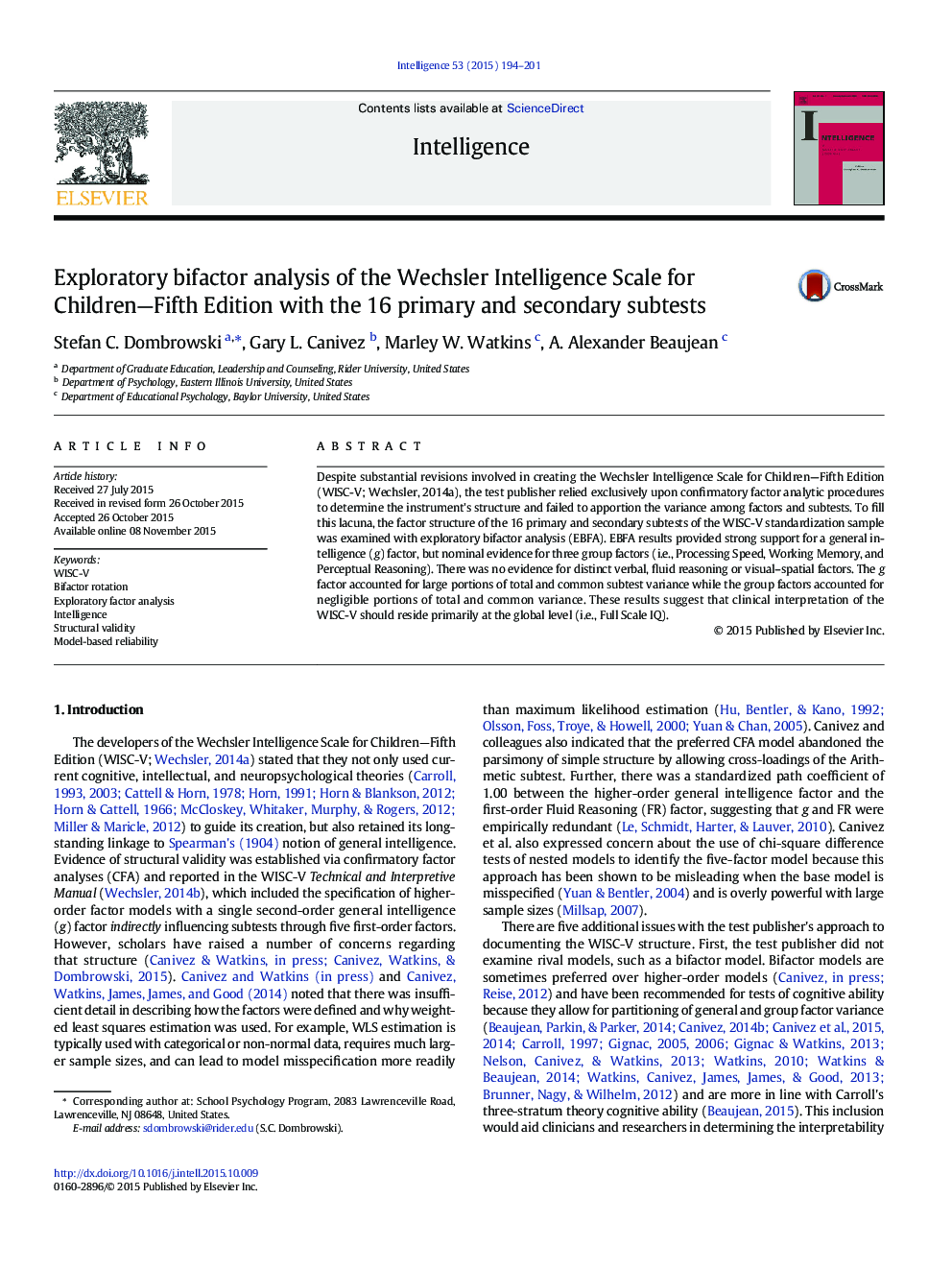| Article ID | Journal | Published Year | Pages | File Type |
|---|---|---|---|---|
| 7293684 | Intelligence | 2015 | 8 Pages |
Abstract
Despite substantial revisions involved in creating the Wechsler Intelligence Scale for Children-Fifth Edition (WISC-V; Wechsler, 2014a), the test publisher relied exclusively upon confirmatory factor analytic procedures to determine the instrument's structure and failed to apportion the variance among factors and subtests. To fill this lacuna, the factor structure of the 16 primary and secondary subtests of the WISC-V standardization sample was examined with exploratory bifactor analysis (EBFA). EBFA results provided strong support for a general intelligence (g) factor, but nominal evidence for three group factors (i.e., Processing Speed, Working Memory, and Perceptual Reasoning). There was no evidence for distinct verbal, fluid reasoning or visual-spatial factors. The g factor accounted for large portions of total and common subtest variance while the group factors accounted for negligible portions of total and common variance. These results suggest that clinical interpretation of the WISC-V should reside primarily at the global level (i.e., Full Scale IQ).
Related Topics
Social Sciences and Humanities
Psychology
Experimental and Cognitive Psychology
Authors
Stefan C. Dombrowski, Gary L. Canivez, Marley W. Watkins, A. Alexander Beaujean,
